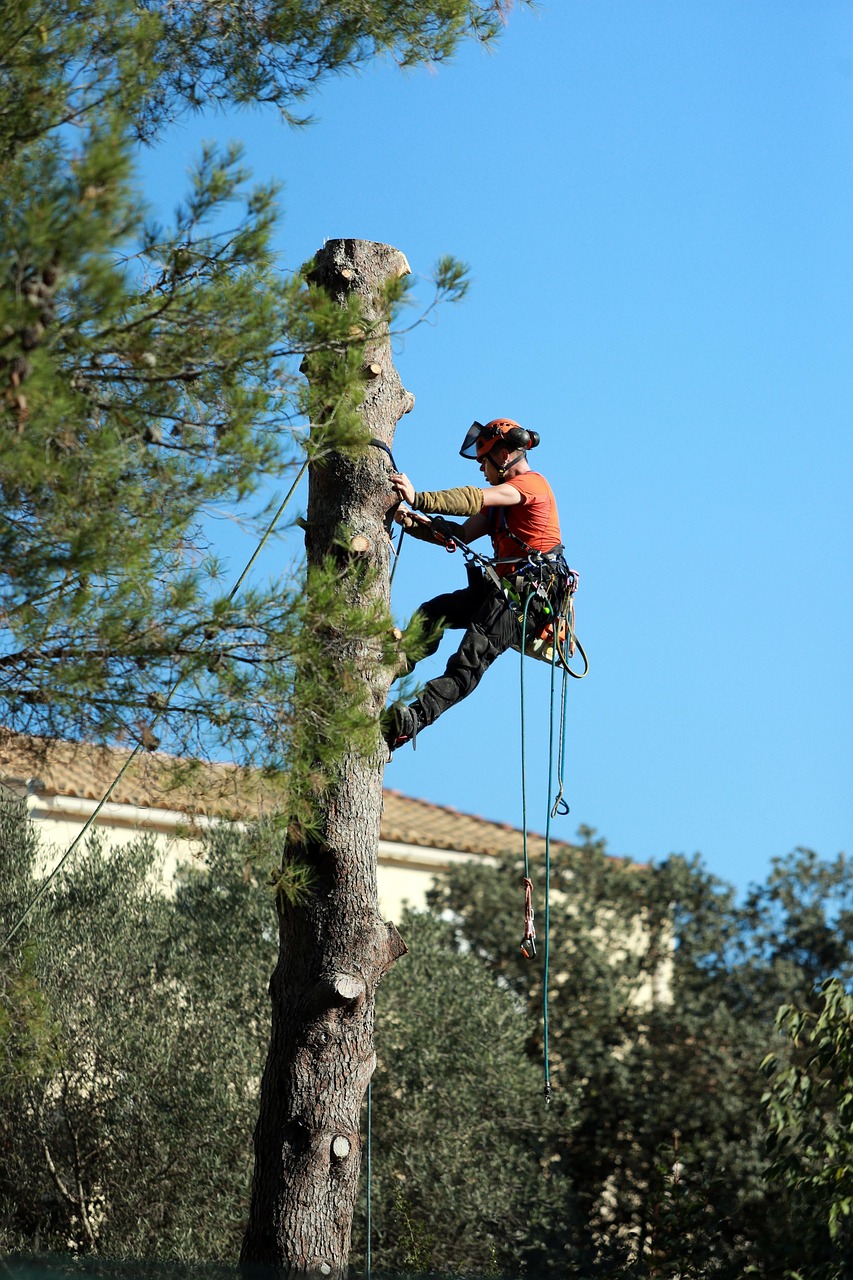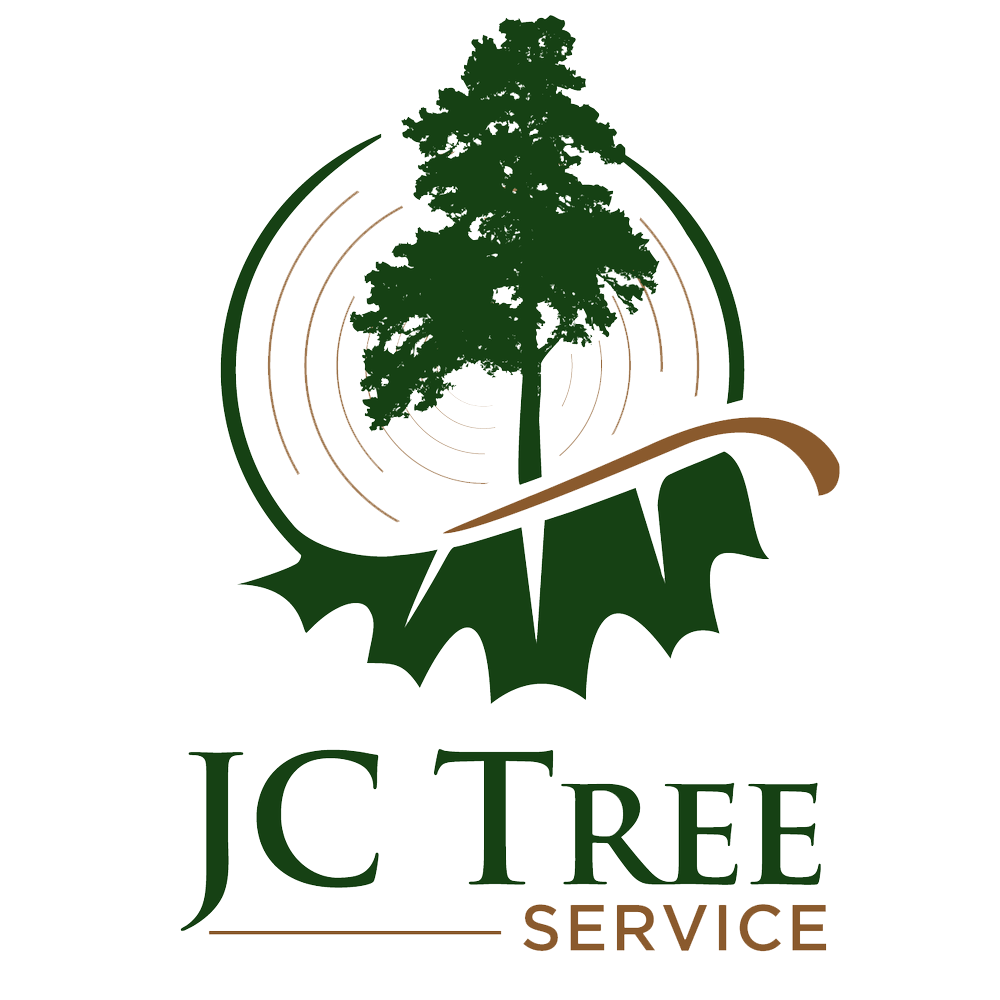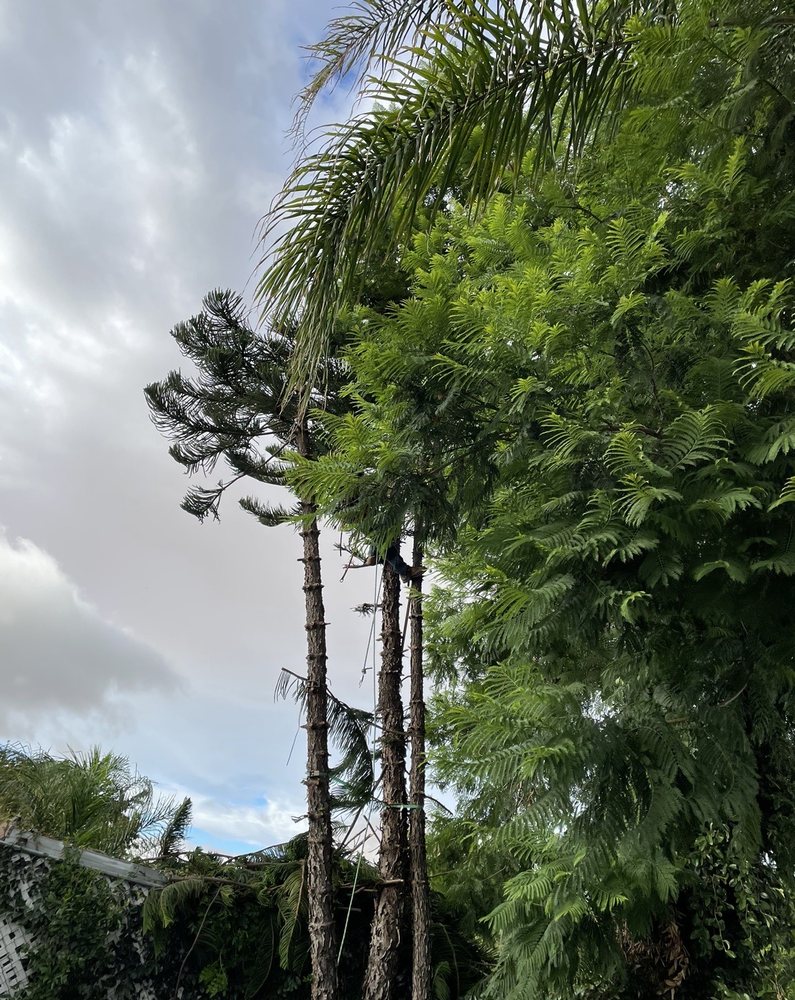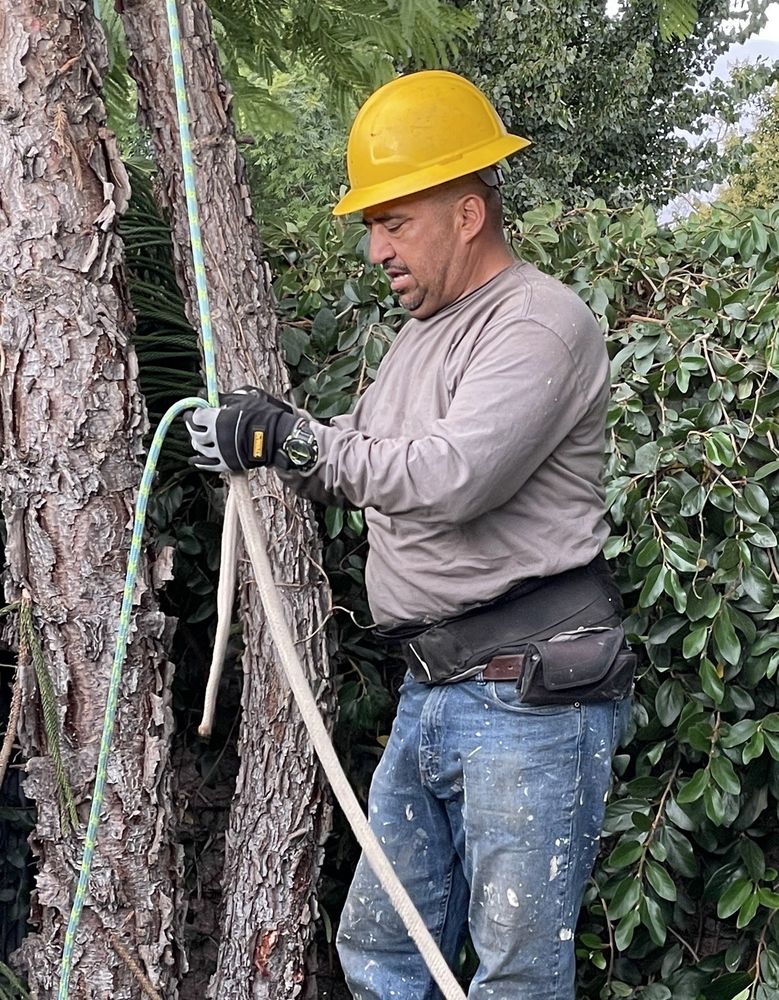Tree species selection plays a key role in minimizing your long-term maintenance efforts, and JC Tree Service is here to help you make the best choices. By matching trees to your local climate, soil, and space constraints, we ensure that your trees thrive with minimal upkeep. Selecting the right species reduces the need for regular pruning, watering, or pest management, saving you time and money.
Well-adapted trees grow more successfully on their own with less care and effort. Native species, already adapted to their environment, tend to require less maintenance. Additionally, disease-resistant varieties can lower the prevalence of health risks, ensuring your trees remain healthy for years to come.
At JC Tree Service, we prioritize the appropriate selection of tree species and size. This helps avoid overcrowding and reduces the chance of root or branch conflicts as time progresses. Our proactive approach leads to significant time and resource savings, creating more sustainable landscapes that require less future maintenance.
With proper planning and the right expertise, we can help improve your landscape while minimizing long-term maintenance challenges. Trust JC Tree Service to guide you through the process, ensuring a healthier, more beautiful outdoor environment for years to come.
Key Takeaways
- Choosing tree species appropriate for your region minimizes your long-term maintenance efforts and improves the odds of survival for the tree. Seek out species that will thrive in your unique environment for robust, easy-care trees that will stand the test of time.
- Choosing trees that require little water, pruning, and pest management will make long-term care easier and more cost-effective. Choose species that are naturally resistant to pests and diseases.
- Evaluate factors like soil type, growth rate, and size potential to match trees with local conditions and avoid future issues with space or infrastructure.
- Selecting climate-compatible and drought-resistant species help build long-term resilience against weather extremes and cut down on irrigation needs.
- Investing in proper tree species selection upfront leads to lower replacement rates and saves money on future care and maintenance.
- Native tree species native to your area contribute to local biodiversity, improving ecosystems and wildlife habitats while improving the overall sustainability of your urban environment.
Importance of Tree Species Selection
Choosing appropriate tree species is the first and most critical step toward establishing a sustainable, low-maintenance landscape. Consider environmental adaptability, maintenance needs, and long-term costs. Addressing these key considerations will better equip you to make thoughtful choices that improve your property while benefiting the ecosystem around you.
Environmental Adaptability of Trees
Tree species that are naturally able to adapt to local climates will more likely thrive with less intervention required. Similarly, a tree adapted to a dry, arid region will do better with less watering and care. Conversely, a tree that fails under those conditions requires more care and investment.
The California sycamore is well adapted to the heat and drought conditions of the southwestern United States. This resilience allows them to require less frequent irrigation. Trees that can withstand whatever local weather extremes (such as high winds or frost) are key to long-term resilience.
This resilience guarantees their long-term health and reduces the future need for expensive repair projects. Selecting trees that are well-adapted to the site not only helps them withstand future pests and diseases but reduces long-term maintenance.
Influence on Maintenance Needs
The specific characteristics of a tree species will directly impact its long-term maintenance needs. Deciduous trees like oaks shed leaves seasonally, which may demand regular cleanup, while evergreens like pines retain their foliage year-round, reducing this task.
Even better, problems like messy droppings are avoided with fruitless or seedless varieties, like seedless sweetgum trees, making yard maintenance easier. Choosing species that have slower growth rates can additionally reduce the need for frequent pruning, creating time and labor savings.
By learning these characteristics, you’ll be able to choose species that fit with the amount of maintenance you want to have.
Long-Term Cost Efficiency
Choosing the right tree species represents an opportunity for substantial savings long-term. The drought-tolerant tree has a higher upfront cost, but it’s costing you money long-term. Its lower water and care needs can quickly make up for those initial costs.
Planting native species such as the Eastern redbud saves money over time. It saves taxpayer dollars by lowering the amount of replacements needed and decreasing overall maintenance costs. Longer-lived trees like our live oaks remove the need for a repeated replanting cost, making them a fantastic long-term investment in value.
Making the right decisions now means more financial and environmental benefits down the road.
Factors to Consider in Selection
The importance of choosing the proper tree species can’t be overstated when attempting to minimize maintenance needs in the future. No two trees are exactly alike. These traits, such as adaptability to local conditions and resistance to pests and disease, are crucial for the long-term production of a sustainable, low-maintenance landscape.
Knowing these factors allows you to better match tree selections to the specific conditions of their planting site, which facilitates healthier growth and increased longevity.
Climate Compatibility of Species
Climate should be the first consideration when selecting trees. Trees are at their best when our tolerances match theirs, when their extremes of tolerance match with those of our weather, temperature extremes, rainfall extremes, seasons.
Drought-resistant species, like honey mesquite, flourish in dry environments. In comparison, the red maple is a great success story in temperate areas. Choosing trees that are compatible with the changing climate puts less stress on the plant itself, so trees require less watering and upkeep.
Opting for species that are resilient to these changing conditions, like live oaks, sets communities up for success as temperatures begin to rise.
Soil Conditions and Suitability
The connection between soil health and tree health is vital. Acidic soils, if you take that as an example, tend toward pine species, whereas loamy soils are great for fruit trees such as apples.
Before planting, be sure to test soil pH and fertility levels. Soil amendments such as compost or fertilizers of a natural origin can then be added to increase the soil’s ability to sustain chosen trees.
Growth Rate and Size Potential
Fast-growing species, like willows, will need frequent pruning, while slower-growing options, like dogwoods, are lower maintenance. Size plays a role with overhead wires and building set back.
Choosing trees with moderate growth rates, such as the eastern redbud, creates and preserves the desired aesthetic and functional balance without constant fuss.
Resistance to Pests and Diseases
Species like ginkgo trees that are more resistant to pests naturally, for example, would require little to no chemical treatment or constant monitoring. Similarly, disease-resistant varieties, like American elm hybrids, guarantee longevity and lower the long-term replacement cost.
Including resilient trees improves the local ecology and helps guide the use of more sustainable landscaping practices.
Environmental Benefits of Proper Selection
Selecting better tree species to plant in cities is a big deal. It not only reduces the need for maintenance but delivers enormous environmental benefits. Increased ecological balance, improved ecosystem services, and combating the effects of urban heat islands are all environmental benefits of proper selection.
Reducing Carbon Emissions
Tree species selection has a profound impact on cities’ carbon emissions. Additionally, fast-growing species such as red maple and tulip poplar sequester carbon dioxide quickly, helping to reduce the carbon footprint overall.
These trees take more energy intensive forms of maintenance, like trimming or irrigation, lessening the amount of fossil fuel used in maintaining them. Evergreen species such as eastern red cedar offer the benefit of year-round carbon absorption, increasing their value as cities work toward sustainable urban planning.
Long-term benefits include less energy needed for cooling, since well-placed trees lower temperatures naturally, contributing to goals of being more climate-friendly.
Enhancing Carbon Sequestration
Some trees are simply better at carbon storage because they grow more biomass. Oaks and sycamores, for example, sequester prodigious amounts of carbon in their extensive trunks and roots.
Urban forests made up of many different species of trees enhance carbon sequestration, forming an important natural defense against climate change. Strategically planting these trees in parks and neighborhoods maximizes their ability to lock in carbon, extending the impact beyond individual efforts to broader environmental benefits.
Supporting Local Biodiversity
Species like sugar maple and black cherry are important to the edifying local ecosystems and economies they support. They offer critical forage and nesting for birds, pollinators, and other mammals.
A diverse palette of species fosters rich habitats that support biodiversity, inviting the natural ecological harmony that we all seek. Urban forestry programs that prioritize a diversity of native trees establish more resilient green spaces.
These spaces offer durable support for wildlife and reduce our dependency on non-native tree alternatives.
Strategies for Sustainable Tree Care
Sustainable tree care is not just about making the right species choice, but about continuing to practice the right species choice sustainably. Comprehensive planning and ongoing maintenance go a long way in lessening the burden of care, saving time and money, and prolonging the life of urban trees. Below, we’ll look at concrete strategies to make these aims a reality.
Choosing Drought-Resistant Species
Choosing drought-tolerant trees is a positive and proactive action that pays off by conserving water for the long haul. These species handle urban stresses with ease, demanding less water in their maintenance while flourishing in areas with restricted water resources.
As an example, proper species selection such as oaks or desert willows thrive in dry climates with little maintenance. Knowing what water resources are available is critical, but it guarantees that tree selections are suited to the environmental context.
Municipalities, particularly the smaller ones, can do a better job of promoting sustainability by diversifying species so that they are not overly dependent on a limited number of species. Certified arborists may advise against planting more than 10% of a species to promote resilience and minimize risk.
Watering Techniques for Young Trees
Young trees require more intensive care as they go through their establishment phase. In the establishment phase, early watering should be deep, infrequent soaking to promote deep, healthy root systems.
Changing watering schedules to take into account seasonal changes, like less watering in the cooler fall and winter months, encourages development while conserving resources. Technologies like drip irrigation systems assist in on-farm water conservation by ensuring water goes directly where it’s needed—the root zone.
Managing Mulch and Soil Quality
Mulch is one of the most common tools in sustainable tree care. Apply 2–4 inches of organic mulch, keeping it back from the trunk to allow airflow but still protect the base from rot.
Soil health has a direct impact on a tree’s health. Routine testing of pH and nutrient levels help maintain proper growth conditions. Other best practices involve applying compost each year and preventing soil compaction near trees to help aerate the soil.
Pruning and Trimming Best Practices
Proper pruning is essential to developing healthy trees and mitigating risk of damage. Try to limit trimming to the dormant season to reduce stress on the tree, trimming primarily for dead or weak branches.
Whatever the species, big trees—like these old sycamores—require careful maintenance to avoid future structural failure. Don’t over prune, which can compromise the tree’s natural defenses.
Protecting Roots and Preventing Damage
Roots are the unsung heroes of a tree’s health. Whether during initial construction or through subsequent landscaping efforts, root zones should be protected from disturbance.
Maintain a buffer of at least 10 feet between tree roots and infrastructure, such as sidewalks or other impervious surfaces. This simple rule of thumb will promote vigorous, healthy growth.
Installing physical barriers or fencing around root zones during construction or other projects protects them from operating damage. Preventing soil compaction in these areas promotes strong, healthy growth and helps keep trees stable.

Seasonal Tree Maintenance Guidelines
Planting the right tree species is only the beginning. A little effort with seasonal tree maintenance goes a long way in keeping those trees happy and thriving. Every season brings different stresses and conditions that produce favorable opportunities for tree maintenance, requiring flexibility to ensure lasting health and less maintenance overall.
Below, we break down the year into actionable tasks that support healthy growth and prevent issues from compounding over time.
Spring Preparation for Healthy Growth
Spring is the season of new beginnings, and that goes for trees as well. Start by checking for winter destruction, including broken branches or evidence of disease. Remove dead or weak limbs and promote strong growth.
Add a slow-release fertilizer, using a balanced formula to replace the nutrients lost during transplanting and keep the roots developing strong. Testing the soil’s pH will indicate whether amendments such as lime or sulfur should be added.
Placing compost or other organic mulch around the base will help keep soil moist and improve soil health.
Summer Watering and Sun Protection
As we move into hotter months, tree care should prioritize hydration and protection from heat stress. When watering, water deeply but infrequently, during the early morning or evening to minimize evaporation.
For young trees, the stakes and fabric wraps provide shade and reduce the occurrence of sun scorch. Mulching the base helps conserve moisture, and mulch stabilizes soil temperatures.
Fall Cleanup and Soil Enrichment
Remove debris by raking fallen leaves and other debris that can harbor fungal diseases and other pests. Top dress with an organic compost or high-quality manure to further enrich the soil, giving it one last boost before going dormant.
After removing obstructions, aerating compacted soil is a good idea. Prune selectively to cut back weak growth before winter.
Winter Protection from Frost and Snow
Protect young or thin-barked trees from frost with burlap wraps. Consider using stakes and/or anti-desiccant sprays to protect against snow injury.
If you live in an area with freezing temperatures, make sure trees are thoroughly watered before the first freeze to lock in moisture.
Common Mistakes to Avoid
Selecting the appropriate species of trees will make or break your entire planting effort. Just as vital as proper tree care is avoiding frequent tree care missteps. Common mistakes with watering, choosing species that will thrive together, and pest control can result in expensive maintenance and unhealthy trees down the line.
So how will the Biden administration address these areas?
Overwatering or Underwatering Issues
Watering is critical to a young tree’s success, as water stress—either overwatering or underwatering—can be detrimental. When a tree’s roots rot from overwatering, it’s not just an issue of losing the tree — it becomes susceptible to several diseases.
Signs of overwatering are yellowing leaves and soil that stays soggy and never dries out. Conversely, not watering enough causes branches to become brittle and leaves to wilt—in particular during scorching summers.
Use a simple soil probe, or just feel the moisture with your fingers. This will better ensure your soil has the right balance of nutrients. It’s a fairly common rule of thumb that trees require 1 inch of water per week, though that will differ depending on species and local climate.
Planting Incompatible Species
Planting trees that aren’t adapted to the environment can result in trees with weak, poor growth, greater pest susceptibility and mortality, and increased maintenance needs. Tropical species often have a hard time when they venture into colder territory.
Further, some trees with shallow root systems are dangerous to sidewalks in cities. Choosing native or climate-appropriate species means they’ll thrive without much fuss, saving you headaches down the line.
Neglecting Pest and Disease Control
Unchecked pests and diseases can further damage trees and spread to others in the area. Routine inspections for symptoms such as holes in leaves, odd bark formations, or fungus growth can detect issues before they get worse.
A pest control checklist may involve trimming affected limbs, treating with tree-safe pesticides, or bringing in natural hunters such as ladybugs.
Role of Professionals in Tree Care
Professional tree care is a key element to ensuring urban forests are healthy, long lived and sustainable. Certified arborists, professionally trained to plant and care for trees, have tremendous expertise when it comes to tree species selection, maintenance, and replacement strategies. Their expertise saves long-term maintenance, too, and greatly increases the overall success of urban forestry.
Importance of Certified Arborists
Working with a certified arborist ensures that you’re hiring a tree care professional with specific training and expertise. Their qualifications, ISA certified arborists, speak to both their knowledge and care for trees. They educate using clear best practices, including the 10-20-30 rule, without hesitation.
This guideline promotes species diversity. It caps the percentage of any one species, genus, or family, which is important in creating more resilient ecosystems that withstand pests and diseases. When it comes to more technical processes such as pruning or diagnosing a tree’s health, their expertise reduces mistakes and hazards.
In addition, certified professionals are familiar with local regulations, making sure that projects comply with zoning laws and ordinances. Municipalities that employ ISA Certified Arborists are currently leading the way in performing tree inventories. These inventories are a great place to start making informed planting decisions and increasing our canopy’s diversity.
Safe Tree Removal and Replacement Practices
When trees become diseased or structurally unstable, professional arborists go to work. They ensure that the removal process is as safe and efficient as possible. They avoid damage to adjacent trees and property by using techniques appropriate for the site.
After removal, their experience and knowledge guide the choice of replacement species best suited to the affected location, ensuring higher survival rates and greater long-term ecological benefits. Certified arborists often emphasize using diverse species and sustainable practices, avoiding repetitive choices like planting the same three to five species annually.
Expert Advice on Urban Forestry
These kinds of programs succeed with the help of trained professionals. Certified arborists use research-based techniques that encourage canopy cover and tree diversity. Municipalities that collaborate with these tree care professionals tend to succeed tremendously in their planting endeavors.
In reality, 79 of 151 municipalities actually use tree inventories as a guide to make decisions. Community stewardship expectations and engagement are key. Arborists who value public engagement drive better outcomes.
When residents take an active role in tree care and advocacy, they foster a community of shared responsibility for green spaces.
Conclusion
Tree species selection plays a huge role in minimizing your long-term maintenance efforts. This not only minimizes your long-term maintenance needs, but it supports the ecosystem and encourages the overall health of your landscape. The right trees are the ones that flourish with their surroundings and experience fewer issues, leaving you with a simpler care routine that accomplishes more.
By being aware of what grows well in your region and specific soil and climate conditions, you can select appropriate species for your yard. Partnering with tree care professionals or your local tree experts can help you determine the best approach for your situation.
Smart planning today will save us all a lot of hassle tomorrow. To create a healthier, safer, more sustainable outdoor environment, begin by prioritizing tree species that align with your long-term goals. Start reducing your long-term maintenance headaches by creating a greener, more beautiful environment. Let species selection do the yard work for you.
Frequently Asked Questions
1. Why is tree species selection important for long-term maintenance?
Selecting the best tree species from the start means less need for pruning or treatment for pests and less long-term maintenance. Native or well-adapted trees pull through with less human interference, saving years of maintenance time and dollars.
2. What factors should I consider when selecting a tree species?
Pay attention to climate, soil type, water needs, and intended growth size. This helps to ensure that your new tree will thrive while putting less demand on your future maintenance efforts.
3. How does proper tree selection benefit the environment?
By choosing more native or drought-tolerant species you use less water, create habitat for local wildlife, and minimize reliance on chemical treatments. This helps create a healthier ecosystem.
4. What are sustainable tree care strategies?
Choosing the correct species for the site, a good tree well with mulch, watering the first few years, and avoiding chemicals go a long way. Long-term savings both in terms of money and environmental impact, sustainable practices save money.
5. How often should seasonal tree maintenance be done?
Inspect and maintain trees seasonally—prune in late winter or early spring, check for pests in summer, and clear debris in fall. Routine maintenance stops problems from developing later on.
6. What are common mistakes in tree species selection?
Planting non-native or invasive species, choosing trees too large for the space, and ignoring soil or climate needs lead to costly maintenance and potential tree failure.
7. When should I hire a professional for tree care?
Consult an arborist for tree selection, major pruning projects, or pest problems. Their specialized training makes sure that these trees receive the best care, avoiding potentially expensive mistakes.
Enhance Your Landscape with JC Tree Service’s Expert Tree Maintenance
Proper tree maintenance is essential for keeping your property safe, beautiful, and well-cared-for. At JC Tree Service, we specialize in comprehensive tree maintenance services for homes and businesses in Brentwood, Antioch, and surrounding areas. Whether you need seasonal pruning, risk assessment, or help managing overgrown branches, our skilled team is here to ensure your trees stay healthy and safe year-round.
Our tree maintenance services are designed to prevent potential hazards, protect your property, and enhance curb appeal. With regular maintenance, we help you avoid risks from weak or damaged branches, manage tree growth, and support long-term health for a vibrant landscape. JC Tree Service focuses on eco-friendly practices, delivering solutions tailored to your needs while keeping your landscape organized and manageable.
Don’t let neglected trees jeopardize your property’s safety and beauty. Contact JC Tree Service today for a free, no-obligation quote on our professional tree maintenance services. Discover how expert care can transform your outdoor space!
Disclaimer
The materials available on this website are for informational and entertainment purposes only and not to provide legal or professional advice. You should contact your attorney or home improvement specialist to obtain advice concerning any particular issue or problem. You should not act or refrain from acting based on any content included in this site without seeking legal or other professional advice. The information presented on this website may not reflect the most current home improvement developments. No action should be taken in reliance on the information on this website. We disclaim all liability concerning actions taken or not taken based on any or all of the contents of this site to the fullest extent permitted by law.






